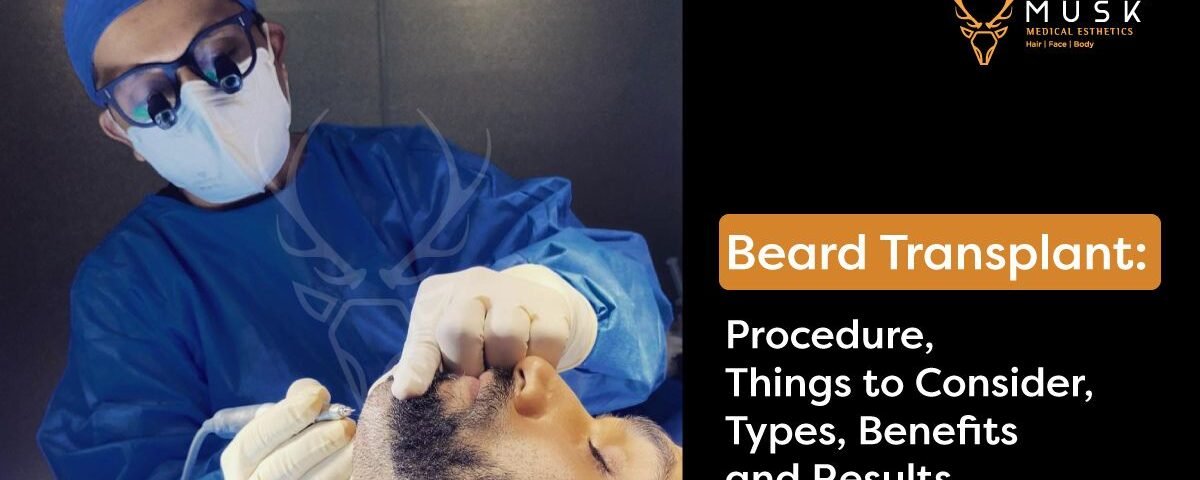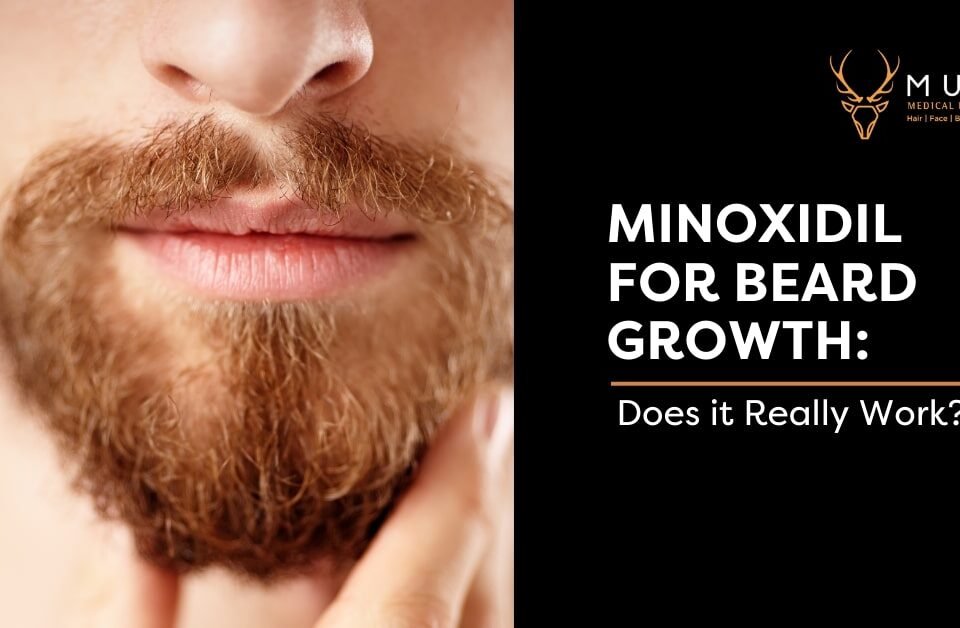Beard Transplant: Procedure, Things to Consider, Types, Benefits, and Results

Beard is incredibly important for men.
Not only does a beard make a great impression on big occasions but can be an eye-catcher in everyday life too.
But not all men are lucky to have a beard.
So, how can men get a fuller beard that improves their overall appearance?
The answer is a Beard Transplant.
If you have tried everything to grow your beard but still couldn’t grow it, don’t worry! Many men are facing the same.
Patchy facial hair or absolutely nothing instead of a stylish beard can be a major letdown. Fortunately, all these can be addressed with a Beard Transplant.
Similarly to a Hair Transplant, you can also opt for a beard transplant, where you can transplant your own hair on your beard area.
Here’s a detailed blog on beard hair transplant, its process, types, benefits, and many more.
So keep reading to find the answers to all your questions.
What Is a Beard Transplant?
A beard hair transplant is a process where hair is taken from one part of your body, usually the base of the scalp on the back or under your chin, and then transplanted onto your jawline or another area where you wish to grow your beard.
The body part from where the hair is taken is known as the donor site, and the body part where the hair is transplanted is known as the recipient site.
What Are The Factors Affecting Beard Growth?
Beard growth is usually affected due to the following factors:
- High Stress
- Genetics and hormones
- Disease like Alopecia
- Medicines and supplements
- Specific beard styles and treatments
Types of beard transplant
There are two types of Beard Hair Transplants:
- FUT – Follicular Unit Transplant
- FUE – Follicular Unit Extraction
1. FUT – Follicular Unit Transplant Method –
In this process, a strip of the patient’s hair is taken from the back of the head by microscopic dissection for follicle extraction.
The hair units are then precisely separated, cleaned, and prepared for grafting. In this technique, a visible scar can be seen on the donor site from where the strip has been taken.
2. FUE – Follicular Unit Extraction Method –
FUE is the most common type of beard transplant. In this process, an individual hair from the donor area is grafted one by one and then harvested on the affected area. The hair unit is properly cleaned and prepared for grafting.
In this technique, as the hair is directly pulled out from the back of the head, it doesn’t leave any bald patches or noticeable scars. Only small white round scars are visible around the follicle.
Beard Transplant Procedure
What is the process of a beard transplant?
The most common question that comes to everyone planning for a beard transplant. So here we are explaining how a beard transplant exactly works in three-step.
The three steps are harvesting, implantation, and recovery.
1. Harvesting
Harvesting is the first step of a beard transplant. Whether you choose FUT or FUE beard transplant technique, the back of your head will be shaved by your Doctor. This will give them a closer and clearer look at the hair follicles from the harvest areas.
Before the harvesting process starts, Doctor will give you a local anesthetic; so you don’t feel uncomfortable or any pain during harvesting or implantation.
2. Implantation
After the follicles are harvested from your head, the doctor will inject a local anesthetic into the area of your face where the implants need to be placed.
After this, the implantation begins, and the Doctor will start implanting each follicle into your facial skin. Following this, they will shape your new beard as per the discussion before the surgery.
3. Recovery
You’ll need a full day to recover from the beard transplant surgery. A small layer may form around each newly implanted hair follicle, but it will fall out in a couple of days.
After 7 to 10 days, it will be normal, and you’ll be able to start shaving or trimming your new beard.
Also, if you notice hair fall after 2-3 weeks post-surgery, then there’s nothing to worry about. It’s normal, and your new hair will naturally start growing.
Candidates for Beard Transplant
Men suffering from the following concerns are ideal candidates who opt for facial hair transplants.
- Men suffering from alopecia that causes hair loss
- Diseases such as cancer
- Hair loss due to previous hair transplant
- People with patchy beard growth
- Burn and small scars
What Are The Benefits Of Beard Transplant?
- Natural looking beard
- Quick Healing
- Faster and permanent results
- Cost-effective
- Painless – only small pinches are felt
- Allow various styles of the beard
- Safe surgical procedure
- Covers scars and burns
Things To Consider Post Beard Transplant
Care For 7 Days
Here are the things you need to take care of in the 1st week of post-Beard Transplant.
- Keep your surgery area clean to avoid infection and other side effects.
- Regularly use the medication and antibiotics prescribed by your Doctor; after the beard implant surgery.
- In the first week, wash yours properly as per the instructions given by your doctor.
- Avoid rubbing or scratching your face post-beard transplantation in the first week. If you feel itchiness, wash and dry your face gently without rubbing or putting any extra pressure.
- Do not smoke, use tobacco products, or drink alcohol.
Care For the First 3 Months
Here are the things you need to take care of three months post-Beard Transplant.
- Avoid shaving for the first three months after your beard transplant surgery. You can continue shaving after three months of your treatment.
Beard Transplant Results
FUE beard transplant or FUT beard transplant, whatever the type of procedure is performed on you, within 3 to 4 months, the transplanted hair follicle will be settled into place and growing.
Both techniques can produce natural-looking beards, while beards after FUT beard transplant tend to be fuller. The only reason is that more follicles are harvested when a strip of skin is removed.
After 1 week or 10 days of Beard transplant, results will be visible to you.
What results can be seen after 1 month of a beard transplant? After 2-3 weeks of beard transplant surgery, your transplanted hair will start falling out. After 3 months of beard transplant, the beard hair will start growing again permanently.
The final results can be seen after 1 year of Beard transplant. You’ll have a full, healthy beard.
Summing up
So are you ready to charm your face with a masculine accessory?
There’s no doubt that beard transplants provide men with natural-looking results, but the results are highly dependent on the Doctor you choose.
Whatever procedure you choose, consult with a doctor who specializes in skin and hair and knows about beard loss. Choose the best clinic for beard transplant with proven experience and results.
Musk Clinic is one of the best clinics for beard transplants in Ahmedabad, where we perform the best beard hair transplants with highly experienced board-certified surgeons.
Our clinic is equipped with world-class technologies and follows the utmost hygienic measures and safety management while performing beard transplants.
Talk to our experts at Musk Clinic about everything you need to know about beard and hair transplants.








